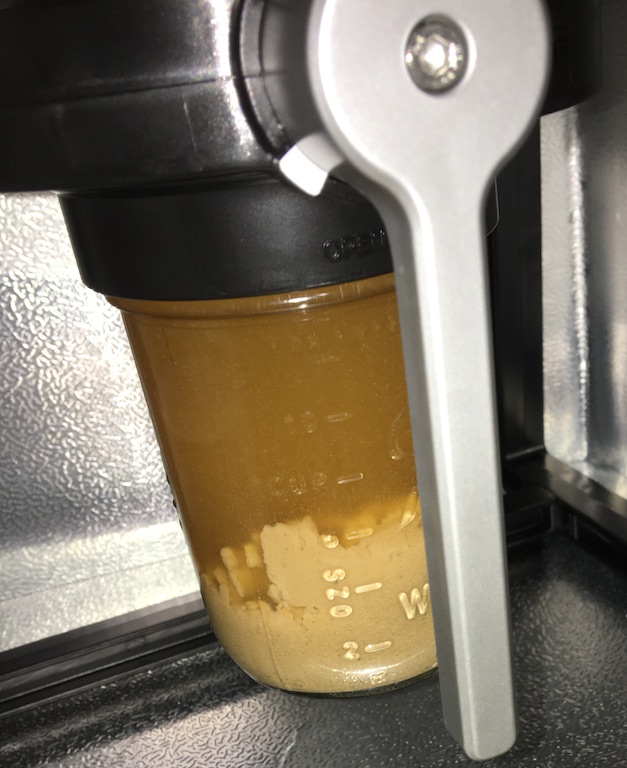dmattinson
Member
So I went out to the garage this morning to take out the trash and put the cans on the curb. On the way back to the house, I thought I would check on my fermenter with some Oktoberfest I made on Sunday.
Well, me being 0 cups of coffee into the day and forgetting about the chemical composition of gasses, reached into the fermentation freezer chest to take a picture of the trub collecting in my Catalyst.
Well, that is one mistake I won't be doing again! nestar:
nestar: nestar:
nestar:
After the CO2 hit me like a zap to the throat, I remembered why all those animals died in lake basins in Africa after a massive release of CO2 from a lake bed.
So, for the new guys out there using a box, chest, freezer or other contained fermentation spot, be aware of the fact that CO2 is heavier than air (think of dry ice clouds falling off of tables) and reaching into and breathing CO2 during active fermentation will at best be like a soda burp up the nose and worse, could make you pass out. Air out the chamber before reaching in!
On a lighter note, I am really pleased with the activity to far. Blow-off tube in Starsan solution is bubbling away and a nice krausen has begun forming.
I used a kit that came with my Catalyst from Craft-a-Brew in the Oktoberfest style of beer using US-05 yeast.
I have my Inkbird set to 67F but with a 2F variance. It was running just about 69F this AM when I took these pics. The jar is part of the fermenter design that allows for a trub collection and allows you to pitch yeast or dry hop without taking the lid off or transferring to another container/vessel.



Well, me being 0 cups of coffee into the day and forgetting about the chemical composition of gasses, reached into the fermentation freezer chest to take a picture of the trub collecting in my Catalyst.
Well, that is one mistake I won't be doing again!
After the CO2 hit me like a zap to the throat, I remembered why all those animals died in lake basins in Africa after a massive release of CO2 from a lake bed.
So, for the new guys out there using a box, chest, freezer or other contained fermentation spot, be aware of the fact that CO2 is heavier than air (think of dry ice clouds falling off of tables) and reaching into and breathing CO2 during active fermentation will at best be like a soda burp up the nose and worse, could make you pass out. Air out the chamber before reaching in!
On a lighter note, I am really pleased with the activity to far. Blow-off tube in Starsan solution is bubbling away and a nice krausen has begun forming.
I used a kit that came with my Catalyst from Craft-a-Brew in the Oktoberfest style of beer using US-05 yeast.
I have my Inkbird set to 67F but with a 2F variance. It was running just about 69F this AM when I took these pics. The jar is part of the fermenter design that allows for a trub collection and allows you to pitch yeast or dry hop without taking the lid off or transferring to another container/vessel.

































![Craft A Brew - Safale BE-256 Yeast - Fermentis - Belgian Ale Dry Yeast - For Belgian & Strong Ales - Ingredients for Home Brewing - Beer Making Supplies - [3 Pack]](https://m.media-amazon.com/images/I/51bcKEwQmWL._SL500_.jpg)



























